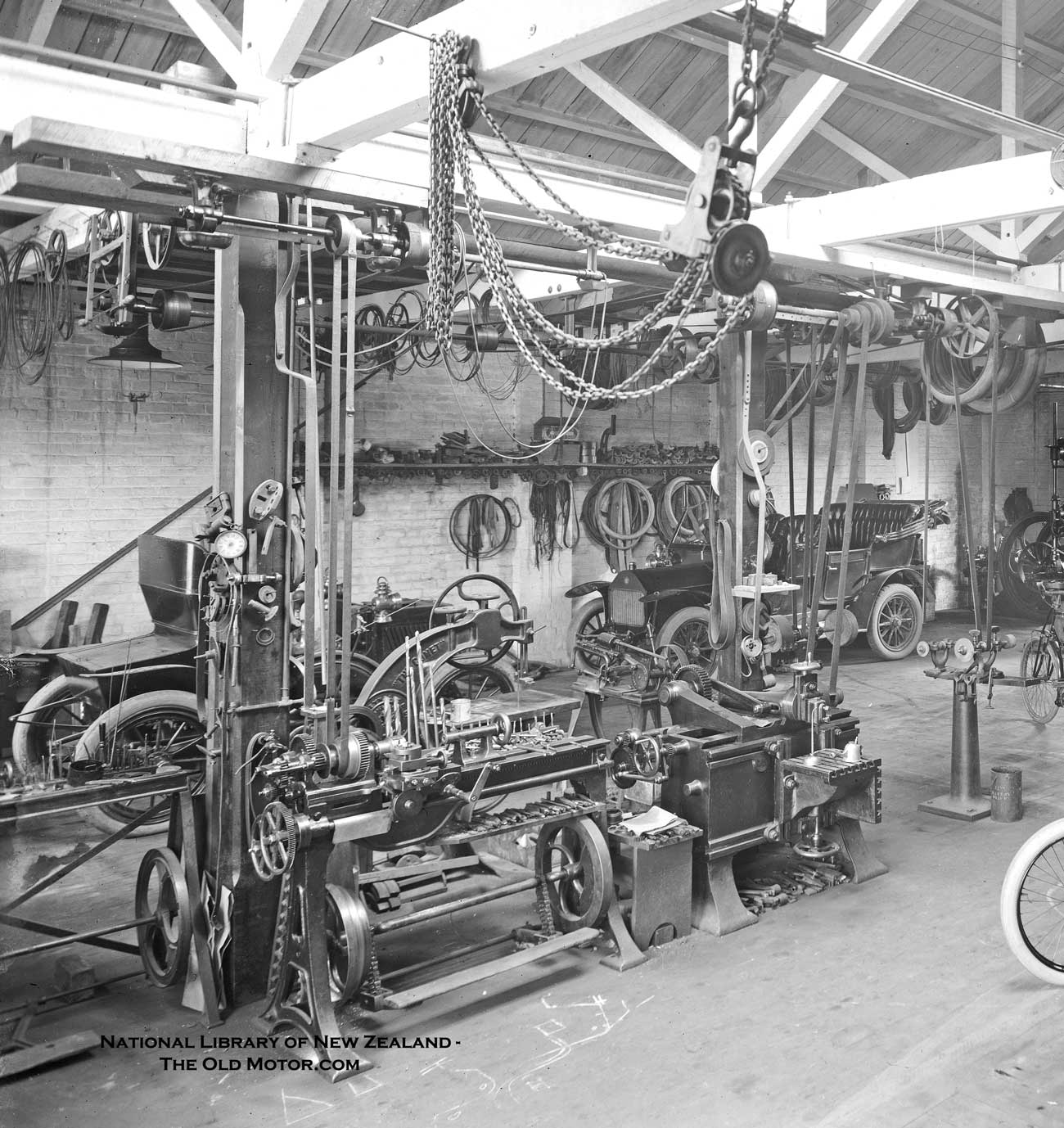t-head
Cast Iron
- Joined
- Nov 9, 2012
- Location
- New England, USA

This photo is an enlargement of only one half of a very interesting early garage scene in New Zealand that is filled with machine tools which were powered by either a steam or gasoline engine through an overhead line-shaft and belts.
Seen in the image are: three lathes, two of which were originally foot powered, a shaper, bandsaw and a drill press, one more unidentified machine and the engine that powered the shop
See two more images of the interior of this shop and the rest of the equipment including the engine that powered the shop, and another interesting garage photo on The Old Motor.
Last edited:



 and I noticed the old knob and tube electric wiring up in the rafters.
and I noticed the old knob and tube electric wiring up in the rafters.